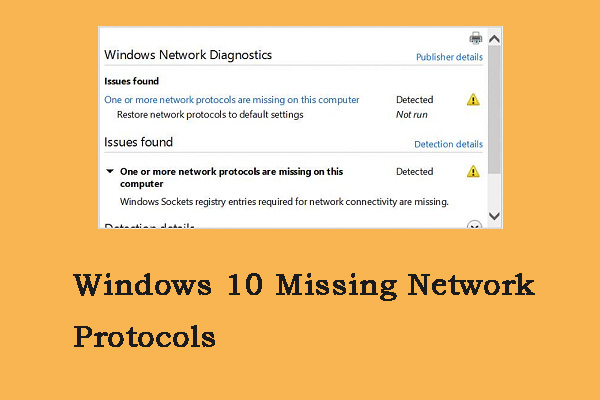This post is focusing on the transport layer. From this post, you can know the definition and functions of the transport layer. Now, you can read this post carefully to get more detailed information about the transport layer.
What Is the Transport Layer?
What is the transport layer? The transport layer is the fourth layer in the Open Systems Interconnection (OSI) model and is responsible for end-to-end communication on the network. It provides logical communication between the layered architecture of the protocol and application processes running on different hosts in other network components.
In short, the transport layer collects message segments from the application and transmits them to Layer 3. Then, these segments will be reassembled into a complete message and then passed to layer 7.
The transport layer is also responsible for error correction management and it provides you with quality and reliability. In this layer, the host will send and receive error-corrected data, packets, or messages over the network. And it is a network component that allows reuse. Now, keep on reading this post from MiniTool to learn more information about the transport layer.
Also see: What Is TLS and How to Enable It on Windows Server?
What Does the Transport Layer Do?
What does the transport layer do? In the following part, you can know some services provided by the transport layer.

1.Connection-Oriented Communication
The first function of the OSI transport layer is connection-oriented communication. The device on the network communication endpoint establishes a handshake protocol (such as TCP) to make sure a secure connection before exchanging data. However, this method has a weakness – confirmation is required for each message delivered.
Compared with self-correcting packets, this will increase the considerable network load. When sending a defective byte stream or datagram, repeated requests will cause a significant reduction in network speed.
2.Same Order Delivery
The second function of the transport layer is that it has the same order delivery. By assigning numbers to packets, ensure that packets are always delivered in strict order. Although the network layer is responsible, the transport layer can correct any discrepancies in turn by discarding packets or reordering device interrupts.
3.Data Integrity
The third function of it is data integrity. Use checksums to ensure data integrity between all delivery layers. These checksums ensure that the transmitted data is the same as the received data and is not damaged. You can retransmit lost or damaged data by requesting resends from other layers.
4.Flow Control
The next function of the transport layer is flow control. Devices at both ends of the network connection usually cannot understand each other’s capabilities through data throughput. The final data sending speed may be faster than the receiving device can buffer or process the data.
When this happens, a buffer overflow may cause the communication to be completely interrupted. On the contrary, if the receiving device does not receive data fast enough, it will cause the buffer to be underrun, which may lead to unnecessary degradation of network performance.
5.Traffic Control
Digital communication networks are limited by bandwidth and processing speed, which may mean great potential for data congestion on the network. This kind of network congestion can affect almost every part of the network. The transport layer can identify the symptoms of node overload and reduced flow rate and take appropriate steps to correct these problems.
6.Multiplexing
The transmission (multiplexing) of multiple packet streams from unrelated applications or other sources on the network requires some very dedicated control mechanisms, which can be found in the transport layer.
This multiplexing allows applications to be used simultaneously on the network, for example when opening different Internet browsers on the same computer. In the OSI model, multiplexing is performed in the service layer.
Also see: What Is Microsoft Network Adapter Multiplexor Protocol
7.Byte Orientation
Some applications prefer to receive byte streams rather than data packets. If required, the transport layer allows the transmission of byte-oriented data streams.
Other Protocols
In addition to the transport layer protocol, there are some other protocols.
ATP – AppleTalk Transaction Protocol
CUDP – Cyclic UDP
DCCP – Datagram Congestion Control Protocol
FCP – Fibre Channel Protocol
IL – IL Protocol
MPTCP – Multipath TCP
RDP – Reliable Data Protocol
RUDP – Reliable User Datagram Protocol
SCTP – Stream Control Transmission Protocol
SPX – Sequenced Packet Exchange
SST – Structured Stream Transport
TCP – Transmission Control Protocol
UDP – User Datagram Protocol
Final Words
What is the transport layer? This post has gathered the transport layer’s definition and functions. If you want to learn some information about PATA, you can refer to this post.
